- © 2025 Annapolis Home Magazine
- All Rights Reserved
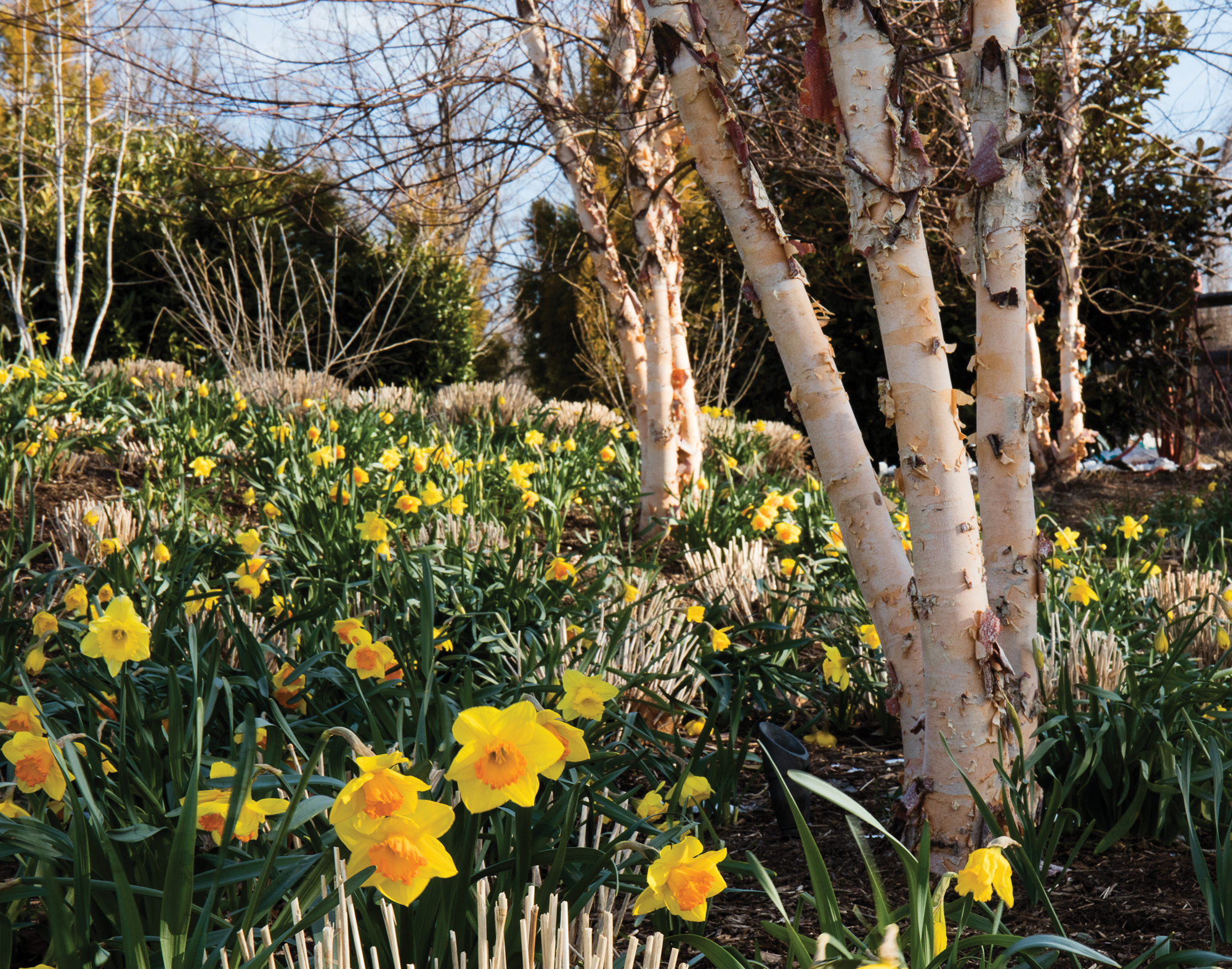
We lead busy lives, in fact we brag about being busy. We multitask, work on vacation, and conference while our kids play on three travel teams. I am just as guilty. I design and build gardens for a living, and I strive to wrap my clients daily lives with an evolving natural beauty. I try to connect people, their houses, cars and life styles, to their land. I do this with hopes that they will stop and notice. Gardens are a testament to where we live, how the sun rises, where the water flows and what season we are in. Successful gardens are interesting all the time, with things constantly changing, evolving, growing, flowering and dying. If you don’t stop and pay attention, you will miss it! I am forcing myself to pause and notice the beauty of several gardens in Annapolis and I am inviting you to join me.
Emerging (Spring)
Spring is always slow to emerge, as winter appears to drag on. As the sun gets higher and the soil warms up, things start happening underfoot. Hopefully you have cut back the perennial foliage from last season’s growth by now, so you can revel in the beauty that will soon spring forth. As the cherry trees are blossoming around the tidal basin the perennial “ground cover” layer of the garden is evolving at a fast pace. These herbaceous layers of the garden are alive and growing in a fast paced competition with their companion plants. Nowhere is the cycle of life more evident and ephemeral in the garden. Think about a woodland setting, where all the bulbs and spring perennials get busy growing and flowering, before the trees leaf out. As the forest layers leaf out, they fade into the background. These layers can occupy the same space in your garden, under your deciduous trees and shrubs.
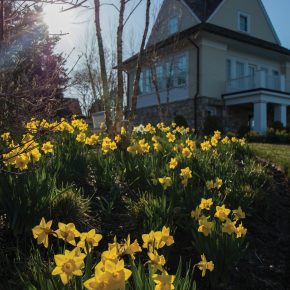 Daffodils (Narcissus) – I know this late winter blooming bulb is very common, but it is a dependable perennial bulb that is also deer- proof. Many of your perennials and ornamental grasses are not up until May. You can never plant enough. Mix white, yellows, orange and cream colors.
Daffodils (Narcissus) – I know this late winter blooming bulb is very common, but it is a dependable perennial bulb that is also deer- proof. Many of your perennials and ornamental grasses are not up until May. You can never plant enough. Mix white, yellows, orange and cream colors.
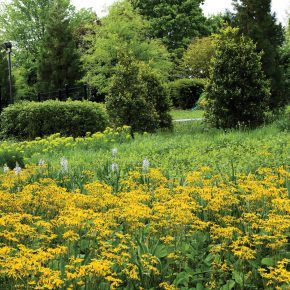 Golden Ragwort (Packera aurea) – My favorite native creeping perennial for shady or sunny areas with medium to wet soils. This plant really covers the ground and blooms in a carpet of yellow, starting in April. The basal foliage is evergreen, so you don’t have to waste your money on mulch.
Golden Ragwort (Packera aurea) – My favorite native creeping perennial for shady or sunny areas with medium to wet soils. This plant really covers the ground and blooms in a carpet of yellow, starting in April. The basal foliage is evergreen, so you don’t have to waste your money on mulch.
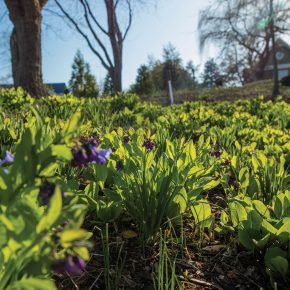 Virginia Bluebells (Mertensia virginica) – If you have any moist, rich woodland areas, this wonderful native spring ephemeral can naturalize with other shade loving plants. The leafy foliage and blue flowers appear when nothing else is happening, but it goes dormant for the summer.
Virginia Bluebells (Mertensia virginica) – If you have any moist, rich woodland areas, this wonderful native spring ephemeral can naturalize with other shade loving plants. The leafy foliage and blue flowers appear when nothing else is happening, but it goes dormant for the summer.
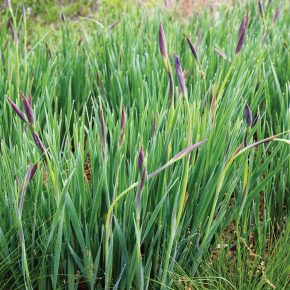 Blue Flag Iris (Iris versicolor) – This native Iris for medium to wet areas starts out as a structural, spikey, bluegreen foliage with the vertical tips pointing skyward. Purple tinted flower buds open to violet blue flowers in early summer. We use this in rain gardens and swales.
Blue Flag Iris (Iris versicolor) – This native Iris for medium to wet areas starts out as a structural, spikey, bluegreen foliage with the vertical tips pointing skyward. Purple tinted flower buds open to violet blue flowers in early summer. We use this in rain gardens and swales.
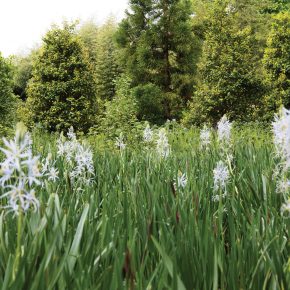 Camassia – These late spring flowering bulbs are a great companion to damp loving perennials. The Camassia flowers dance above the growing foliage of summer perennials, adding a burst of color after the daffodils have faded. We like white and blue Camassia.
Camassia – These late spring flowering bulbs are a great companion to damp loving perennials. The Camassia flowers dance above the growing foliage of summer perennials, adding a burst of color after the daffodils have faded. We like white and blue Camassia.
Being aware of what is happening in your garden
Plant things worth experiencing throughout the year. Experience your garden. The garden is constantly evolving by the year, month, week, day and hour. Being attuned to these changes reveals layers of nature that you are not aware of.
Experiencing the moments in your garden
Nothing is permanent in the garden. The way that particular thing that you saw happen, may never happen exactly that way again. Gardeners try to create gardens with predictable cycles of structure, blooms, color, texture. To be aware of these cycles gives you a much deeper appreciation of your land. By appreciating the fact that very little of this is really permanent makes anticipating what will happen next even more exciting. There are things that happen hourly, daily, weekly and monthly in a garden and if you miss it, you may have to wait another year.
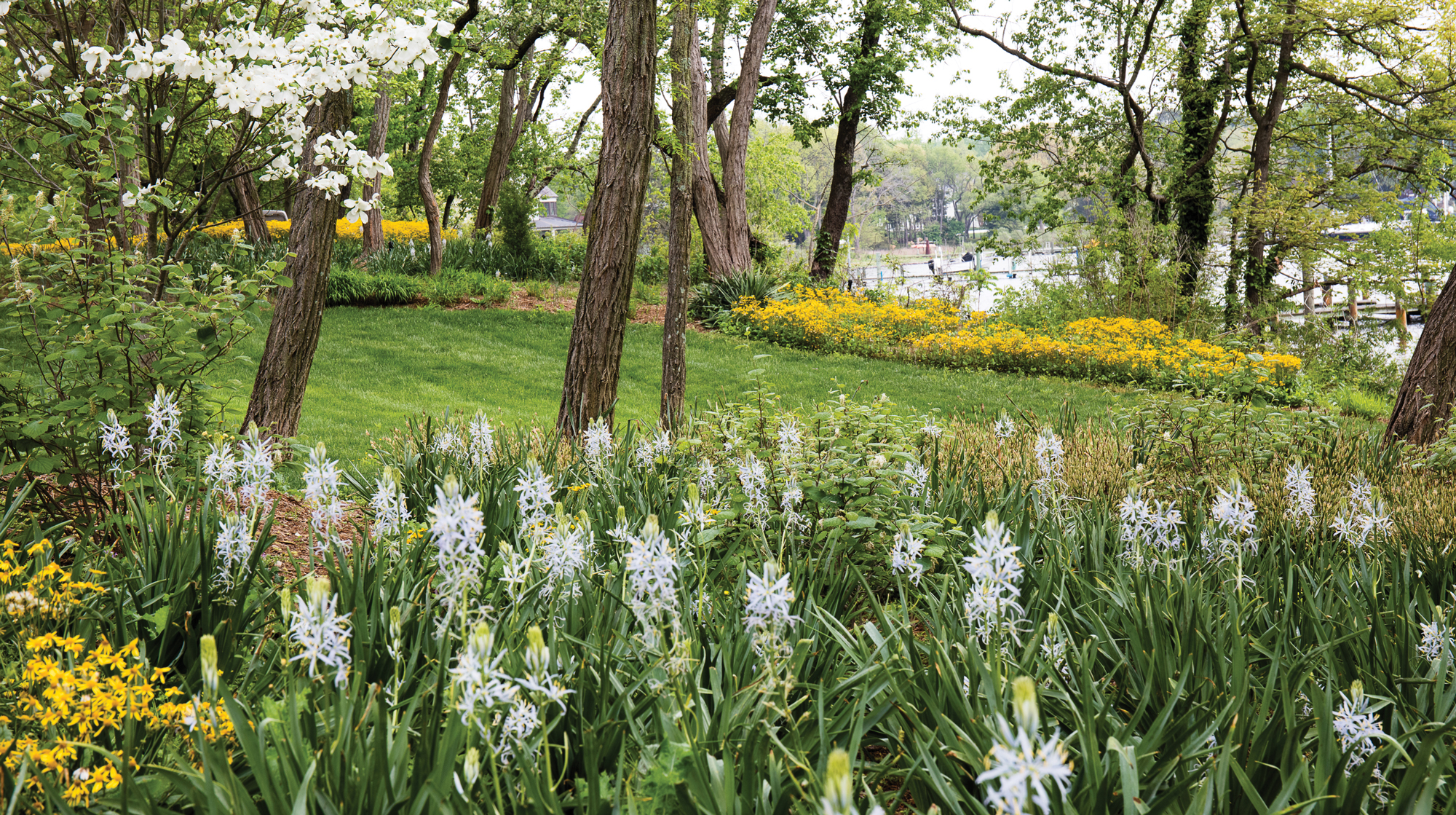
Bob Hruby spent most of his life playing and working on and around the Chesapeake Bay, and lives with his wife and three kids in Annapolis. His passion for design, building and the environment led him to earn degrees in Architecture and Landscape Architecture. He and his business partner Kevin Campion lead a firm of award-winning landscape architects in Annapolis.
RESOURCE:
LANDSCAPE ARCHITECT: Campion Hruby Landscape Architects, campionhruby.com, Annapolis Maryland
Annapolis Home Magazine
Vol. 9, No. 3 2018